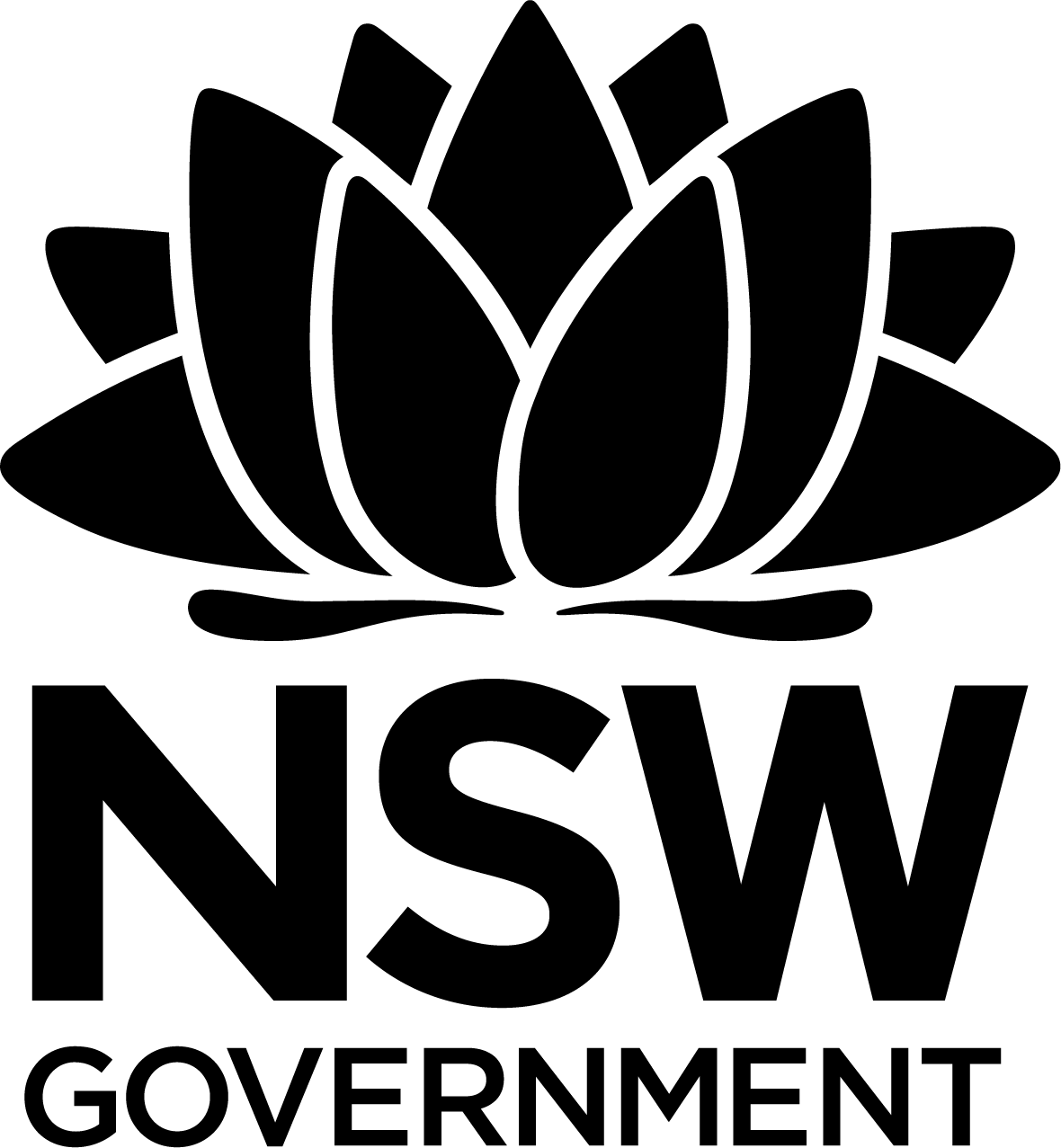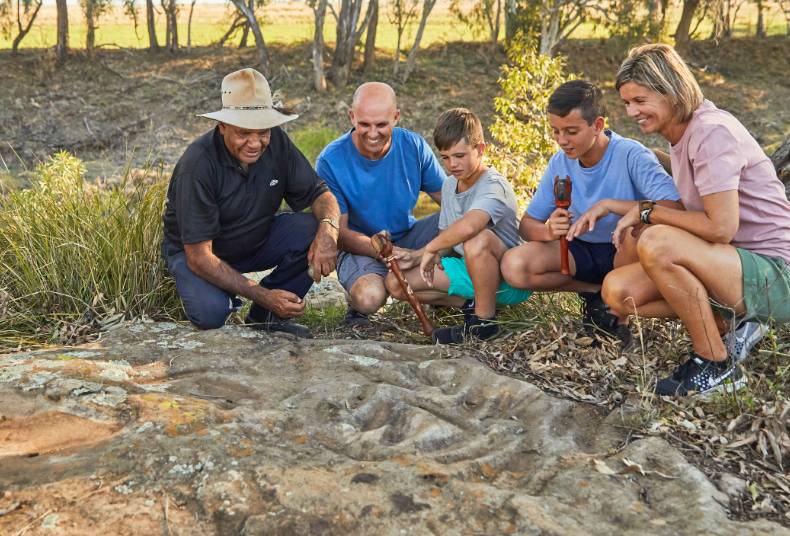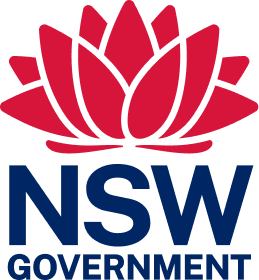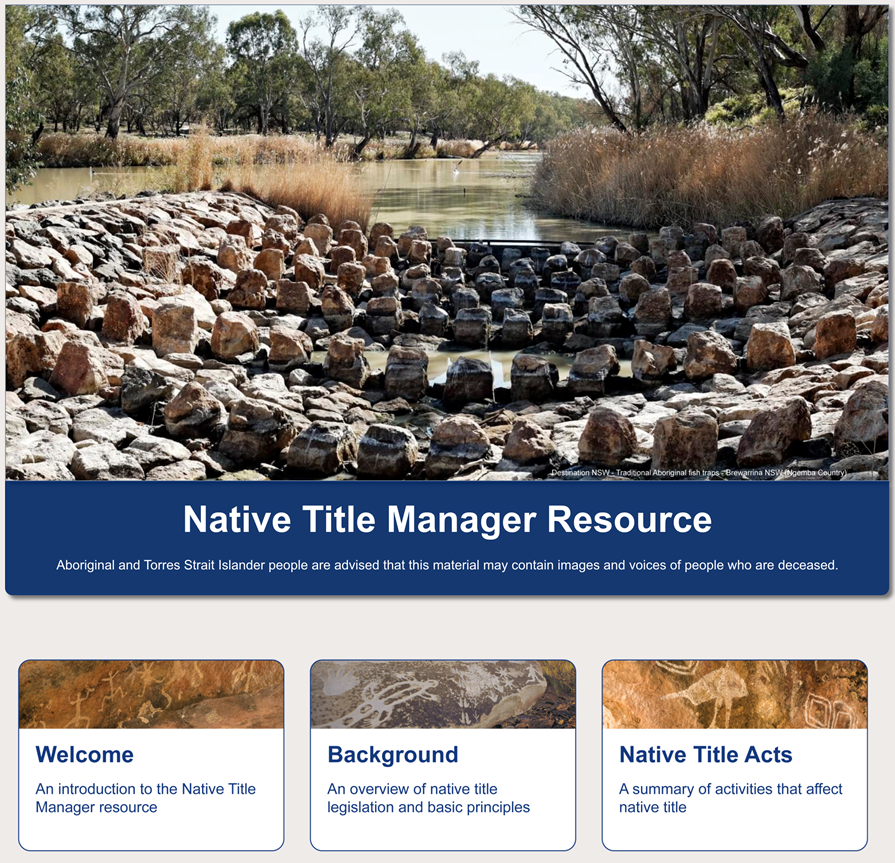
Crown land manager resource
Aboriginal interests

Crown land has significant spiritual, social, cultural and economic importance to the Aboriginal people of NSW. There are various legal mechanisms in place to protect places and objects of heritage significance to Aboriginal people, and provide access or title to Crown lands in certain circumstances.
The following section outlines information on native title, Aboriginal land rights and Aboriginal heritage considerations. We also showcase some case studies on Western Bundjalung people and Mothers Ancestral Guardians Indigenous Corporation.
Native title
Native title is the name Australian law gives to the traditional ownership of land and waters that have always belonged to Aboriginal people according to their traditions, laws and customs. The Commonwealth Native Title Act 1993 (NT Act) sets out how native title rights are to be recognised and protected.
The department is committed to managing Crown land consistently with the NT Act. This responsibility also extends to Crown land managers (CLMs).
Native title vs land rights
Native title rights are different to, and separate from, the statutory right of Aboriginal Land Councils to make claims for land under the NSW Aboriginal Land Rights Act 1983 (ALR Act).
- Native title legislation is about recognising Aboriginal peoples’ connection and existing rights to land and water.
- Aboriginal land rights legislation in NSW is about compensating Aboriginal people for past dispossession, dislocation and removal of land.
Land rights are granted in the form of freehold land where the minister administering the NSW Crown Land Management Act 2016 (CLM Act) determines that the land is ‘claimable land’ for the purposes of the ALR Act. Read more about Aboriginal land rights and Crown land.
How does native title affect my reserve?
Native title might exist on your reserve. Where it does, the basis on which the reserve was established remains valid, and the use of the reserve for the specified reserve purpose takes precedence over any native title rights that may exist on the land after its reservation and the establishment of the Crown land manager.
This means that if Crown land is reserved as a park, beach or nature reserve, say, and the public has the right to access this land, this right cannot be taken away by native title. Native title would be non-exclusive, meaning that existing uses continue alongside activities permitted by native title holders (such as hunting, cultural events, camping).
Management of native title on Crown reserves
Responsibilities regarding native title vary among different types of CLM. There are three categories of CLMs:
Council and category 1 CLMs are responsible for compliance with native title legislation.
This means they must ensure their dealings and activities on Crown reserves they manage comply with the NT Act. Council and category 1 CLMs must employ or engage a native title manager to ensure compliance with the NT Act.
Category 2 CLMs generally cannot undertake dealings or activities that might impact native title without ministerial oversight. Therefore native title compliance for category 2 CLMs rests with the department.
Native title managers
A native title manager is a person who has undertaken approved training or qualifications and is engaged or employed by a council or category 1 CLM to advise on native title compliance.
Native title managers must provide written advice to the CLM about dealings or activities on Crown reserves that might affect native title.
Where the native title manager is uncertain about the native title implications, they must seek legal advice. If this is not possible, the proposed activity shouldn't proceed.
The department cannot provide advice to native title managers on native title compliance.
Native title manager resources
Native title manager workbook
The Native title manager workbook has been designed to guide and assist native title managers in understanding their tasks and responsibilities as part of day-to-day work as a CLM.
This workbook provides support to Council and Category 1 CLMs to confidently fulfil their stewardship role over the Crown land they manage and avoid any risk of unintended outcomes and liabilities.
The workbook also provides information on the significance of native title and why it is important to Aboriginal people and their communities. This will continue to enhance and strengthen relationships with Aboriginal communities, which will in turn benefit the economic and social outcomes of council and category 1 CLMs. For more information, download the Native title manager workbook.
Native title manager advice template
A version of the advice template from the Native title manager workbook has been developed to assist native title managers in providing native title advice on proposed dealings and activities.
Resources for non-claimant applications
Native title non-claimant applications can allow for Crown land dealings and activities to proceed where there is no future act pathway and a native title claim or determination has not been made under the Commonwealth Native Title Act 1993. The department has released a fact sheet and how-to guide to assist with understanding processes for non-claimant applications.
There are a range of native title resources available for council Crown land managers on the council Crown land manager web page.
Native title e-learning module
A new e-learning module has been developed to support improved knowledge of native title legislation as it applies to the management of Crown land by both Council and Category 1 CLMs. The online learning module is a supplementary guidance tool to the Native title manager workbook and approved training..
Does native title exist over reserved land?
As a general rule, the reservation or dedication of land for a public purpose does not extinguish (remove or void) all native title rights and interests in the land. However, it might extinguish some rights.
Whether native title exists over a piece of land is a matter for determination by the Federal Court of Australia. The court can determine that native title exists, or does not exist, based on evidence of continuing connection with the land or waters or a valid inconsistent tenure.
Even if there has been no determination of native title or no claim lodged in respect of the land on your reserve, native title might still exist.
Therefore, until there is a native title determination for your reserve you must assume native title exists and manage your activities in compliance with the NT Act.
CLMs and native title managers are not qualified to decide that native title has been extinguished.
Native title claims over reserved land
The act of making a native title claim confers no special rights on the applicants. However, if the claim passes the registration test provided for in the NT Act, the applicants are granted certain rights. Those rights include the right to receive notice and to comment on some proposed acts—for example, building, grazing or clearing vegetation—that may affect native title. Even if there is no registered native title claim, there may still be a requirement to give notice of particular acts to any representative Aboriginal/Torres Strait Islander body in relation to the area (the representative body). For New South Wales, the representative body is NTSCORP.
A CLM might be notified by the National Native Title Tribunal that a claim has been lodged. If so, the CLM can apply to become a party to the Federal Court proceedings. However, before doing so you should consult the department, as being a party could be both time-consuming and costly. The minister responsible for Crown Lands is responsible for managing claim applications affecting land and water in NSW and is a party to every claim. Accordingly, the minister might be in a position to represent the CLM’s interests.
CLMs might be asked to provide information concerning the use and management of the reserve and the public works that exist on it, to help the minister in the negotiation of the claim and also in any court proceedings. In some cases, you might be asked to help the minister to negotiate outcomes and to play an active role in those negotiations.
If the Federal Court determines that native title exists on a piece of land, the NSW Government will attempt to negotiate an indigenous land use agreement (ILUA) that addresses any land management issues with respect to the public lands covered by the determination or recognition.
When native title has not been extinguished
If native title has not been extinguished over the land making up a reserve, the CLM must not undertake any activity that would ‘affect’ native title unless it is done in compliance with the NT Act. Under the NT Act, an action ‘affects’ native title if it could extinguish any native title that exists, or if it is inconsistent with the ‘continued existence, enjoyment or exercise of native title rights and interests’.
Some common acts on a reserve that might affect native title include:
- issuing a licence or lease
- changing the conditions of a licence or lease
- constructing a public work, building or fixture
- fencing
- hosting an event
- grazing land
- vegetation clearing.
Council CLMs or category 1 CLMs must seek written advice from their native title manager before they undertake an act that might affect native title.
The Native title manager workbook provides detailed guidance and assistance for dealing with scenarios where native title has not been extinguished.
The department cannot provide advice on native title compliance. If there is any doubt about compliance with the NTA then you should seek legal advice.
Links
Native Title Act 1993 (Commonwealth)
National Native Title Tribunal
Indigenous Land Use Agreements
Aboriginal land rights
The Aboriginal Land Rights Act 1983 (ALR Act) is important legislation that provides land rights for Aboriginal people in NSW. The lodgement of an Aboriginal land claim by a Land Council creates what is known as an inchoate (unformed) interest in the land. The full extent of that interest is not known until the claim is investigated and a determination is made by the relevant Minister.
Further information regarding the ALR Act can be found on the Crown Lands website.
In circumstances where CLMs are undertaking significant new works on the land they manage, they should check for the presence of any undetermined Aboriginal land claims.
This check can be done through the department's Aboriginal Land Claim Investigation Unit. Please contact the department for advice.
Aboriginal heritage
All Aboriginal objects and places are protected in NSW under the National Parks and Wildlife Act 1974 (NPW Act). Amendments to the NPW Act in October 2010 introduced increased penalties and strict liability offences for harming Aboriginal objects and places.
Known Aboriginal heritage – check the records
It is an offence to damage known Aboriginal heritage, unless the work is listed in the legislation as ‘exempt’. Therefore it is important to continually check the Aboriginal Heritage Information Management System (AHIMS), maintained by the government, for locations of known Aboriginal heritage.
Such heritage is categorised as either an ‘Aboriginal object’ or an ‘Aboriginal place’. Work that may affect such objects and places requires an Aboriginal Heritage Impact Permit from the department.
Unknown Aboriginal heritage – due diligence required
It is an offence to harm (even unintentionally) Aboriginal heritage that was not known (except where the work is listed in the legislation as ‘exempt’ or ‘low impact’, or the harm resulted in something ‘trivial’ or ‘negligible’), unless it can be demonstrated that a process of ‘due diligence’ was undertaken prior to any work to determine whether such heritage might exist.
Therefore, a due diligence investigation should be undertaken prior to any work (other than work listed in the legislation as ‘exempt’ or ‘low impact’) in areas likely to contain unknown Aboriginal heritage to determine whether such heritage might exist.
To assist compliance with the legislation the department has prepared a Due Diligence Code of Practice for the Protection of Aboriginal Objects in NSW. This document also includes descriptions of common types of Aboriginal objects that may be encountered.
For access to AHIMS, telephone 9585 6345, or visit the Aboriginal Heritage Information Management System website.
Case Studies
Western Bundjalung people
The Federal Court determined in 2017 that the Western Bundjalung people have native title rights and interests over areas of land and water between Casino, Tenterfield and Grafton in the far north coast region of NSW.
The native title rights of the Western Bundjalung people include:
- camping and erecting temporary shelters on the land
- taking and using water for personal, domestic, communal purposes (including cultural purposes)
- hunting, fishing, gathering and using traditional natural resources
- lighting fires for domestic purposes
- engaging in cultural activities, such as ceremonies.
These native title rights are non-exclusive which means that it doesn’t affect existing land users (including those that hold valid Crown land licences and permits) as long as the rights of the native title holders are respected. For more information, read the Western Bundjalung native title determination fact sheet.
Mothers Ancestral Guardians Indigenous Corporation
Mothers Ancestral Guardians Indigenous Corporation (MAGIC) manages the Rick Farley Soil Conservation Reserve in south-west NSW, bordering Mungo Lakes National Park. Rich in flora and fauna, including rare and endangered species such as Malleefowl, the reserve is managed in accordance with Aboriginal land management practices.
RELATED ITEMS
Leases and licences
The department supports a wide range of uses for Crown land, from one-off events such as hall hire for a wedding through to a 10-year lease on a racecourse. Leases and licences set out the rights and responsibilities of the CLM and Crown land users. Learn more about tenure.
Managing assets and heritage
Managing buildings, infrastructure and other assets helps ensure these public places are safe and fit for purpose, while heritage and cultural values protected and preserved.
Building and development
Upgrading and replacing infrastructure, buildings and facilities, or changing the use of the land, may be affected by planning and development regulations.
Dividing fences
Where a dividing fence separates Crown reserves from neighbouring properties, the CLM is liable to pay half of the reasonable costs associated with the repair or replacement of the fence. Learn your neighbourly rights and responsibilities.
This Crown land manager web resource was printed on 22 Feb 2025. The information contained in this web resource is based on knowledge and understanding at the time of writing Feb 2025. However, because of advances in knowledge, users are reminded of the need to ensure that the information upon which they rely is up to date and to check the currency of the information by referring to the website (www.reservemanager.nsw.gov.au).
© State of New South Wales through Department of Planning, Industry & Environment 2025.
Page link: https://reservemanager.crownland.nsw.gov.au/land-management/aboriginal-interests


